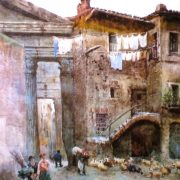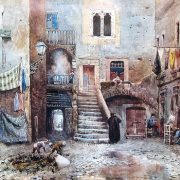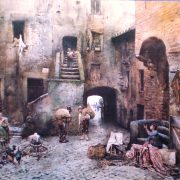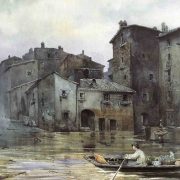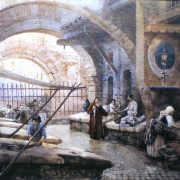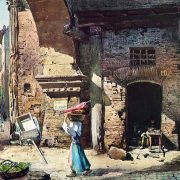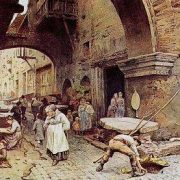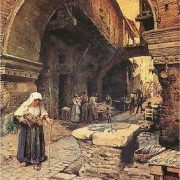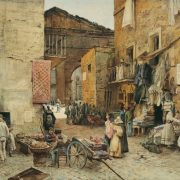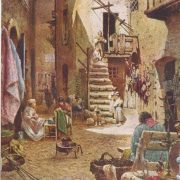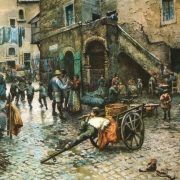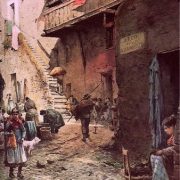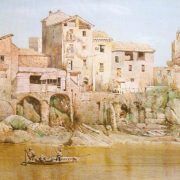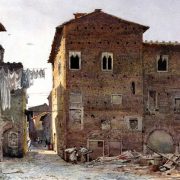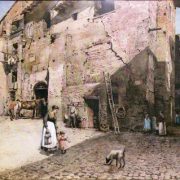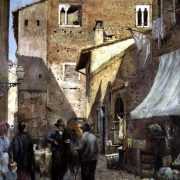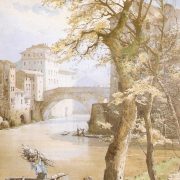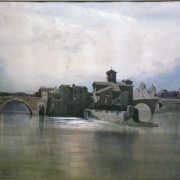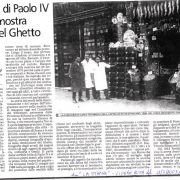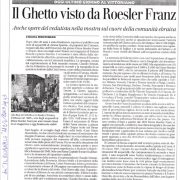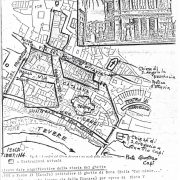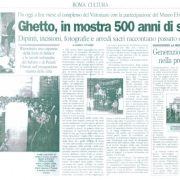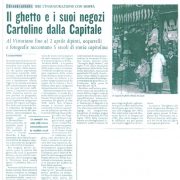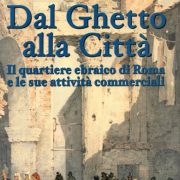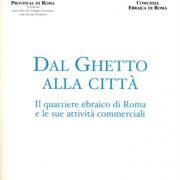The work which has given notoriety worldwide to Ettore Roesler Franz is undoubtedly the “Vanished Rome”, or rather, quoting his own words, “Rome picturesque / Memories of an era that goes.” They are 120 watercolors (each of about 53 × 75 cm., vertical or horizontal), all made between 1878 and 1896, divided into three series of 40 each. Thanks to this work, nowadays it is possible to have a historical record of urban and suburban views that were disappearing, to be handed down to posterity.
In 1883, Leopoldo Torlonia, Mayor of Rome, bought by the artist the first set of 40 watercolors of “Vanished Rome” collection. They were initially kept in the Palazzo Senatorio at the Capitoline Hill in Rome. On 4 May 1908, a year after the death of the painter, the Mayor Ernesto Nathan bought the remaining 80 watercolors, which made up the second and third sets of “Vanished Rome”, by his brother and heir Adolfo (founder of the famous private bank based in via Condotti, which operated from 1869 until 1936).
The works are at the Museo di Roma in Trastevere (formerly “Folklore Museum”) in Piazza Sant’Egidio and are shown periodically.
In 2003 the exhibition Dal Ghetto alla città – Il quartiere ebraico di Roma e le sue attività commerciali took place at the Vittoriano in Rome, where these 18 paintings of Vanished Rome collection depicting the Roman Ghetto have been exposed:

